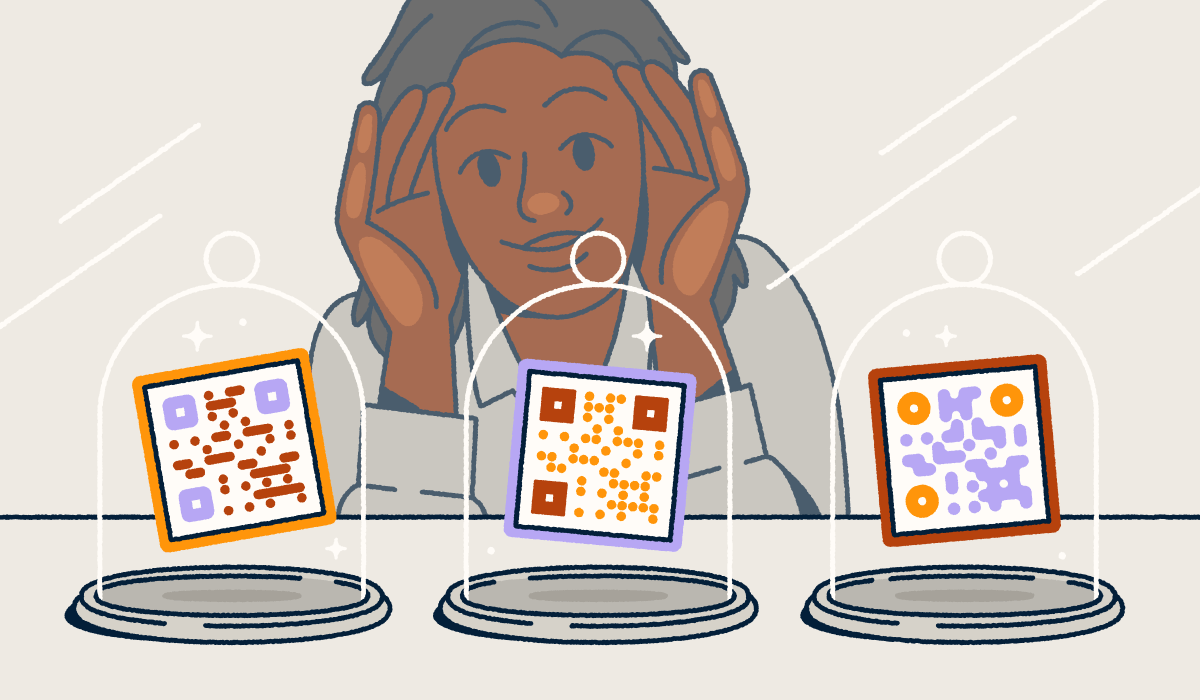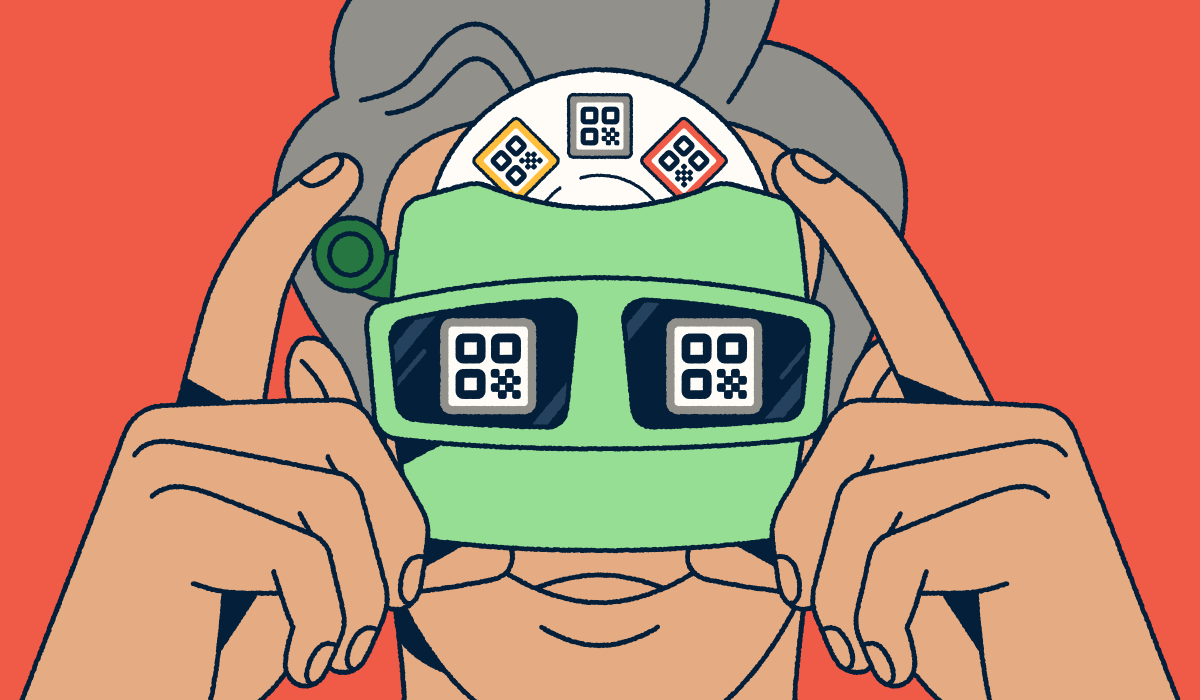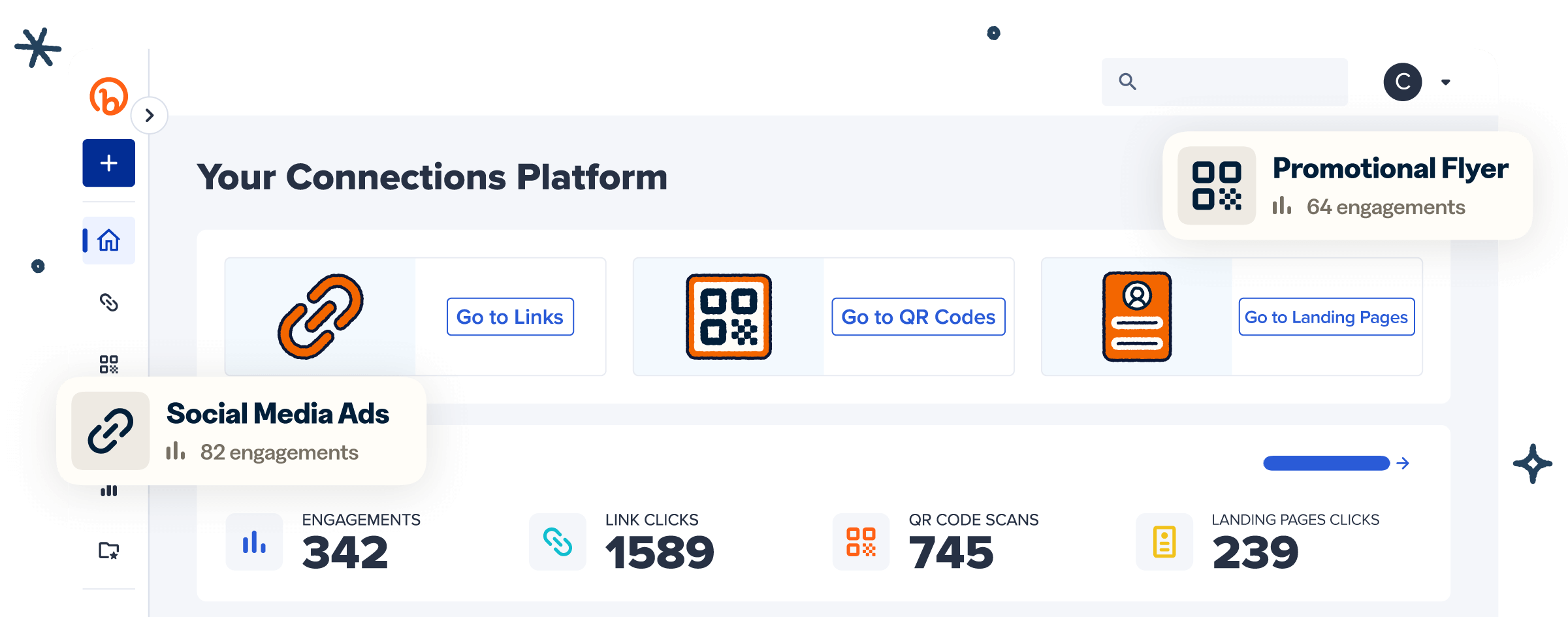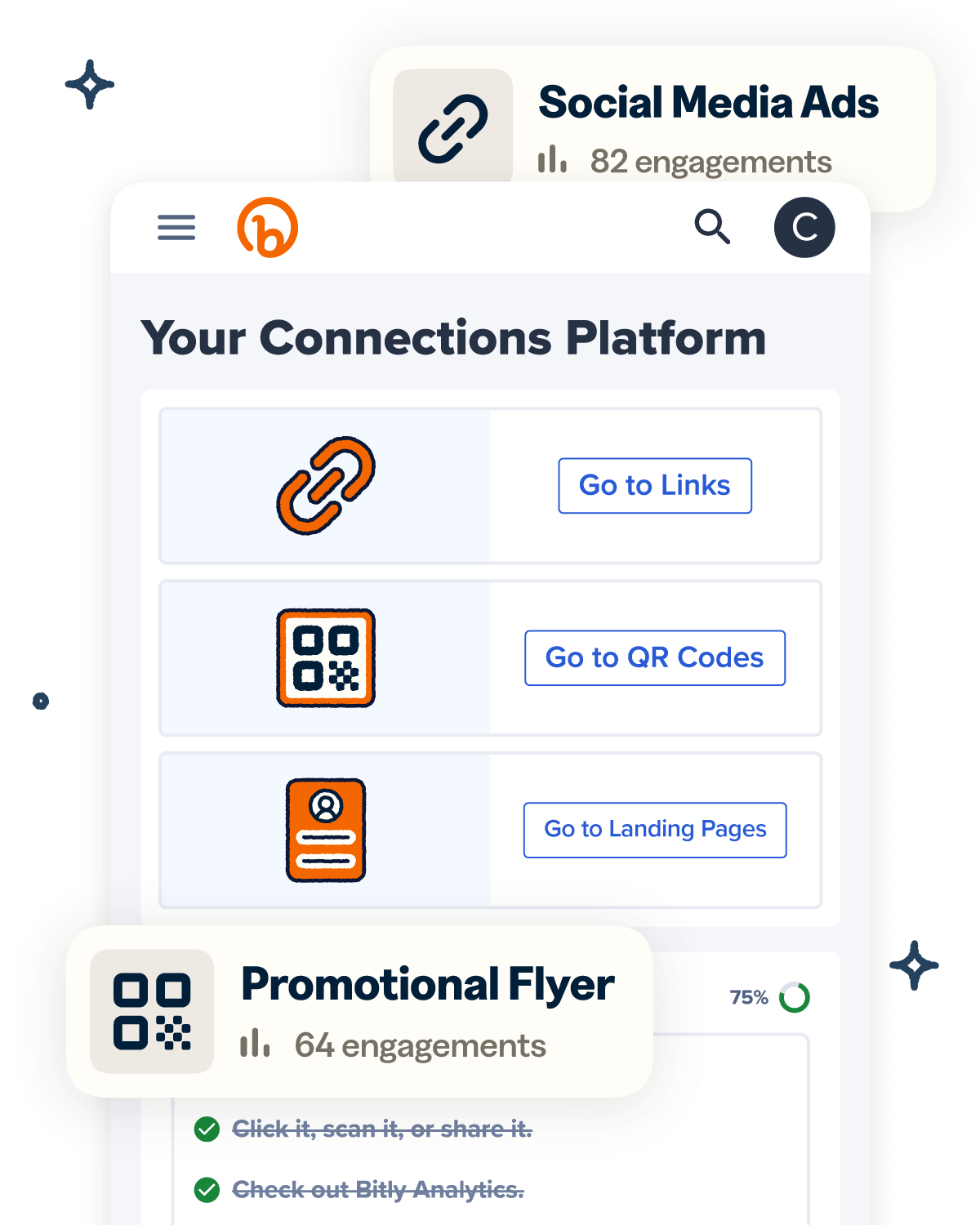Print advertising has always been a staple marketing channel for reaching your audience where they already are, whether you send a memorable direct mail campaign or create a clever billboard they see on their way to work and play. But physical campaigns have historically posed a conundrum for consumers and brands alike. How do marketers make these campaigns immediately actionable for audiences and gather in-depth data on how effective they are?
Luckily, the days of those challenges are long gone, thanks to an increasingly popular digital tool. The small but mighty QR Code is the key to turning your traditional marketing campaigns into actionable, engaging touchpoints, and you shouldn’t go to print without one. Let’s explore why these codes are a game-changer and how you can use them well.
QR Codes + print ads: The perfect match
Across sectors, marketers spend more of their budget on digital channels than traditional channels like print. But that doesn’t mean print campaigns are no longer an influential medium for capturing your customers’ attention. In fact, as digital spaces continue to be increasingly saturated with ads, traditional channels may present an even greater opportunity to innovate and stand out. For instance, major consumer brands like J. Crew, Nordstrom, and Zappos are returning to print catalogs to make the most of their marketing budgets and capture audience attention outside of the digital sphere.
Print campaigns have always faced a major limitation, though—they lacked the convenience and trackability the marketers now glean from digital channels. As much as an audience may have wanted to take action on your brand’s billboard or flyer, they may have been in too much of a hurry to type in a web address or figure out how they could learn more. And even if your brand had a memorable homepage URL to share, you couldn’t distinguish print-driven traffic from direct visits to your URL—so you would struggle to measure ROI and effectiveness of your campaigns.

Luckily, QR Codes solve these marketing limitations and offer above-and-beyond value to help brands make the most of each campaign. By adding a small square to your print campaigns, you give audiences an immediate access point to scan with their smartphones. Within seconds, they can learn more about your offerings, sign up for an event or resource, or buy from you directly. QR Codes let you stay accessible, engaging, and relevant to audiences across channels.
These small but mighty Codes transform your print campaigns from beautiful design and catchy text to an interactive touchpoint and a conversion machine. When you bring the two together, you can unlock high-quality traffic, audience data, and brand awareness to convert into new business.
4 key benefits of QR Codes for print marketing
QR Codes are a must-have for the print ads in your strategy. You can incorporate them into any campaign with ease, with maximum benefits and minimal disruptions to your marketing workflow. Here are just a few of the biggest benefits QR Codes offer to your print marketing strategy.
1. Trackability
One of the biggest advantages of adding QR Codes to your physical campaigns is the data they offer. Bitly QR Codes provide in-depth data every time someone uses their smartphone to scan one. From the Bitly Analytics dashboard, you can review details like the location where scans take place, clicks and scans over time, and highest-performing campaigns.
Without QR Codes, you had to share either your homepage URL on a print ad or a targeted but convoluted URL (which virtually no one will type in). QR Codes cut these tough choices out of the marketing equation—you can link the Code to any URL, whether a link with detailed UTM parameters or a Bitly short link. Now, marketers can review every scan to understand the performance and ROI of any print campaign and optimize each ad.
2. Convenient, customer-first experience
While QR Codes were rising in popularity during the 2010s, widespread QR Code literacy has seen a huge jump in the last five years. Consumers use these Codes every day to scan for restaurant menus, payment options, and easy online access to physical materials. Now, QR Codes are an accessible marketing tool that offers a convenient, actionable way to engage with print campaigns right away.
Consumers don’t have to wonder how to get in touch with your brand or type in the URL for themselves. Instead, they can use a familiar, straightforward channel to head to your website or a targeted landing page in the moment. This means a more user-friendly interaction for them and greater engagement with any of your print campaigns.
3. Cross-channel connection
The firm lines between digital and physical channels have blurred, thanks in great part to versatile tools like QR Codes. They are a portal that can take audiences from an in-person interaction to digital touchpoints with ease, from your website to social channels to mobile app in seconds. The more connection points you have with your customers, the more top of mind your brand will be and the more eager they will be to buy from you in the future—likely sooner rather than later.
This is exactly what healthy cat food brand Smalls achieved by using Bitly QR Codes with its print ad campaigns across New York City. They reached up to 3.6 million subway riders with the campaign, pointing these consumers from an in-person campaign right to their website to draw awareness, digital engagement, and action, long after they saw the ad.
4. Ease of use
Many a marketer has held themselves back from more effective and data-driven strategies because of the upfront investment of introducing new tools. Technical processes. Expensive tools. Complex workflows to introduce analytics.
QR Codes won’t bog down your print campaigns in any of these ways. You could add one to just about any ad in seconds, as long as you have space within your asset. QR Codes are a relatively simple addition to your visual materials, driving value without distraction or disruption to the marketing materials. Instead of having to provide tons of information on a flyer or handout, you can host that information online for more sustainable and less expensive print campaigns.
Ideas to use QR Codes in print campaigns
Whatever goal you have for a campaign and wherever your audience is on their journey, you could almost certainly use a QR Code to reach your customers and guide them to the next step. If you want them to take action online in some way, QR Codes are the perfect tool for the job.
Lean on QR Codes to:
- Deliver timely discounts. From major events like Black Friday to enticing flash sales, share a QR Code to point customers to can’t-miss deals they should take action on right away.
- Entice customers with personalized offers. Use data about your audience to encourage them to scan. Share about regional events or send someone a targeted direct mail campaign based on past purchases, all powered by a QR Code to take action.
- Convert customers to owned channels. Do you offer helpful online resources through your newsletter, video series, or your blog? Encourage them to subscribe, and stay in touch over time with a QR Code to a quick, user-friendly form.
- Offer interactive experiences. Make your marketing more adventurous with every scan. Take a page out of Taylor Swift’s book by using QR Codes in print advertising for gamification or to send audiences to a giveaway, interactive contest, or augmented reality (AR) experience.
- Build excitement for upcoming launches. Especially for brands with a loyal fanbase, QR Codes are the perfect way to draw audiences into a print campaign that creates mystery and suspense about what’s to come. Design simple ads with teaser copy that include a QR Code that reveals what you’ll do next.
Want to create your most engaging and effective print campaigns yet? Start using QR Codes to draw in your audience and build a lasting connection.

4 best practices for QR Codes in print
Now that your gears are spinning on how to create dazzling, engaging print campaigns, let’s get practical. How do you optimize your QR Code usage in any print ad to best reach your audience? Here are some of our best tips for attracting scans and making the most of each one.
1. Build your brand into each code
When you imagine a QR Code, you might picture a straightforward black-and-white square. But beyond their interactivity and analytics capabilities, QR Codes offer a flexible design to build brand awareness every time someone sees your print campaigns.
For instance, you can handpick every inch of Bitly QR Codes by featuring your brand colors and logo and customizing the style and frame of your Code. Draw the eye (and plenty of scans) in every print ad with a branded design your customers will love.
2. Refine your size and quality
QR Codes are pretty resilient marketing tools—for instance, up to 30% of your code can be damaged without rendering it unreadable by smartphones. But when crafting your print campaigns, be sure to make QR Codes accessible and easy to scan. QR Codes should be at least 2 cm x 2 cm for most scanners to read them. The printed size also depends on factors like printing quality, amount of information, and the material the code is printed on, so take steps to ensure your audience can scan it before going to print.
3. Get granular with your segmentation
We’ve already noted how useful QR Code analytics are for understanding the performance of certain print channels. You might create a dedicated landing page destination for certain direct mail, billboards, and flyer campaigns.
But to get the most bang—or rather, data—for your QR Code buck, you can go even more in-depth by sending your Codes to dedicated short link destinations at the campaign level. For instance, you can create separate links for different billboard or poster locations to see which ones get the most scans and engagement. That data can reveal what your audience is most interested in and which locations, copy, or offers are most effective, so you can optimize your next campaign’s performance even more.
4. Update QR Code destinations
Keep your print ads evergreen by refreshing QR Code destinations after limited-time sales, offerings, and launches have ended. With Bitly, it’s easy to redirect a QR Code’s URL to a refreshed and relevant page so your customers don’t uncover a broken or out-of-date link from an old campaign.
Bonus tip: Continue to review analytics on scans from old campaigns to make sure you don’t miss any unusual spikes in interest or traffic to an old QR Code. That can be valuable information about what audiences might want next.
QR Codes are a win, on paper and online
Whatever channels you use to reach your audience, you’re not just trying to capture their attention and share information. You want to deepen your relationship with them and, ultimately, encourage them to take action. That’s the power of interactive touchpoints like QR Codes—they turn print and digital marketing alike into convenient and compelling connections.
The competition for consumers’ attention and wallets is too fierce to market to customers without giving them an easy path to take the next steps right away. For your next print campaign (and all the ones after it), boost your conversions, trackability, and engagement with QR Codes. And make the most of every one with Bitly’s entire suite of tools, from powerful integrations to versatile short links and in-depth analytics. Sign up today—from there, the possibitlyties are endless.




